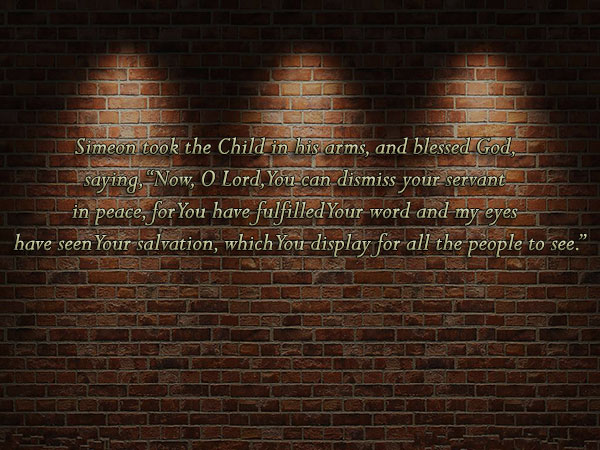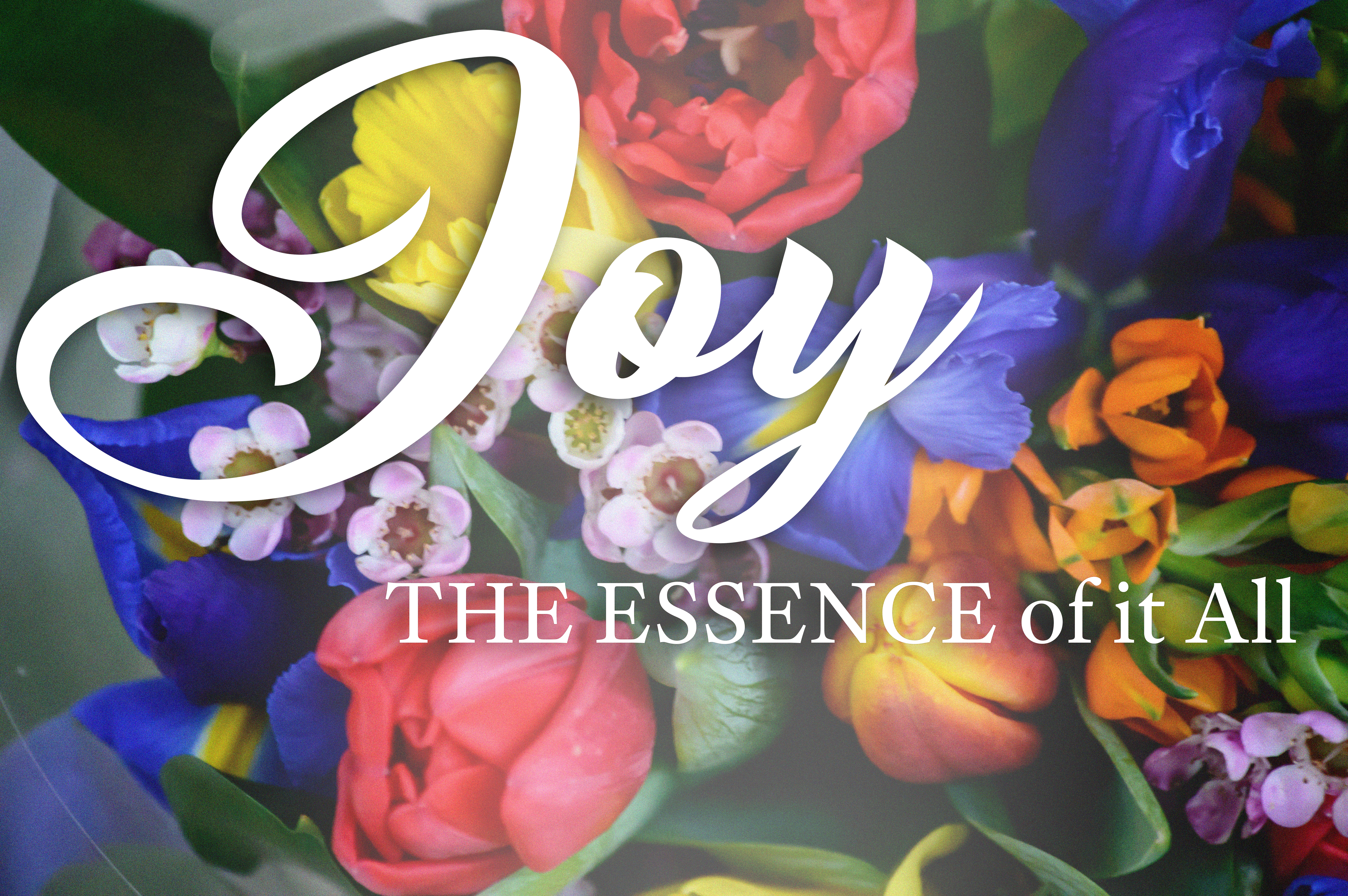How to Prevent Anger from Turning into Rage

Man Stabs Sister Over Rice Cooker
Driver Punches Traffic Enforcer
Son Kills Own Parents
Mayor Charges and Hits City Marshall
These are some news headlines that grab our attention in the recent past. These are instances that sadly illustrate the potential harmful effects of anger. These are also unfortunately the very stories that give anger such a bad name. We are, as a result, cautioned about anger in our childhood. We are taught early on to control and keep a lid on it. We fail however to realize that control is never the solution. Like all other emotions, once buried, it is never buried dead. It is always buried alive. Like the Fernando Poe Jr. movie, Kapag Puno Ang Salop (When The Bin Is Full), it will eventually erupt and wreak more havoc. The key then is to acknowledge anger as part of our human experience. The ultimate challenge is to be able to befriend and address it in such a way that the anger is eventually expressed in an appropriate and more acceptable way. It may then reap the fruits that it originally exists for.
THE PURPOSE OF ANGER
Anger is an emotion. Emotions exist for the sole purpose of informing us of the way by which we perceive or interpret what we are experiencing. Loneliness, for example, surface when we feel or think that we are all alone or that we are inevitably on our own. Jealousy, on the other hand, tells us that the possible threat of losing our loved one is perceived as imminent. Frustration reflects that something or someone is seen as preventing us from achieving our goals. Emotions, therefore, are neither right nor wrong. They are simply subjective information. In listening to them, we are enlightened about our situation and perhaps be in a better position to deal with it.
There are two primal emotions designed in our body system by our Creator that serve as our basic instinct for survival. One is anger. The other one is fear. When danger is at hand, we are poised either to take flight or fight. Fear is the one responsible for our Flight mode especially when we surmise that the threat is not something we can overpower. Anger, in contrast, is the one that pushes us to take a Fight mode. Both help us to defend and preserve our selves.
There are several conditions that can possibly trigger our anger:
- When our personal space and boundaries are violated: when strangers comes too physically close to us and sexually harass us; when colleagues take our belongings without asking our permission; when people pry on our personal life or ask too many nosy questions; when friends or family members impose their values on us or when our values are impinged upon by others
- When our basic rights are trampled and abused: when parents or authorities physically, verbally, emotionally or sexually abuse us; when companies do not accord us what we were promised or what was agreed upon by contract; when we are discriminated because of our color, race, beliefs or orientation; when our reputation is maligned
- When our needs and expectations are not met: when adults fail to offer our basic needs for food, shelter and education; when parents deprive us of attention, affection and acceptance; when we feel that our beloved has ignored, neglected or betrayed us; when institutions fail to give us good services that we paid for
- When our personhood is discounted and our dignity is disregarded: when authorities put us down and insult us; when we are not given equal opportunities; when we are marginalized by society; when we are judged unfairly and labelled unjustly
Anger is therefore a part of the human condition. Who amongst us have not experienced any of these circumstances? The purpose of anger is to ask and demand for justice. It is essentially asserting our worth and our desire to be treated with dignity. Even Jesus himself expressed anger in the scriptures. He was angry when they turned the sacred temple into a marketplace. They had disrespected his Father’s house. On several occasions, he also scolded the Pharisees and even called them hypocrites. He was not angry with sinners. He came for them. He could not however bear those who are condescending and self-righteous who looks down and mistreat the so-called sinners as well as the marginalized. On the cross, he showed his most vulnerable self at the height of pain when he cried to the Father: Why hast thou abandoned me?
MANAGING ANGER
My psychologist-mentor, Fr. Benjamin Carlos, SJ, describes two metaphors from which we can be guided to manage our anger. He said it is like holding a knife. We can hold it from the sharp end which inevitably cuts and hurts us. Or we have the option to hold it by the handle. In the former, we act on impulse and allow the anger to take control of us. In the latter, we take charge of the anger and will therefore be in a better position to decide where to direct it. The key lies in our sense-ability (sensitivity) and response-ability (responsibility).
Notice and Be Aware. In managing anger, we need first to be attuned to our body. We take notice and become aware of what is happening to us. Each emotion is accompanied by corresponding physiological and motor reactions. In the case of anger, a stimulus that occurs is first channelled to the cerebral cortex for processing and interpretation. Then neuro-secretory substances activate the hypothalamus which in turn produces chemicals that activate the pituitary glands. The latter secretes hormone ACTH into the blood stream. In short, our body is prepared to fight. This is the reason why in anger we have aggressive behaviors: strong and loud voices, eyebrows crossing, blood rushing to extremities and poised to attack or defend. Normally, our anger begins with annoyance and irritation. When left either denied and unattended or dwelled on endlessly, it can lead to rage and subsequent violence. To prevent this, we begin by paying attention and noticing what is happening to our body at the very moment we are feeling something: “Now I am sensing my jaws and fists clenching. I am becoming quite defensive. I want to shout back and hit back with hurting words. There is anger brewing inside me.”
Name and Identify. Once we noticed and acknowledged that we are in an angry state, we proceed with naming and identifying the source or sources of our anger. We ask ourselves what is or are the stimulus that activated it? Was it the person? Was it something this person said or did? Was it the circumstances that instigated it? In our example, we can tell ourselves: “I am getting quite irritated because this person is accusing me of something I did not do. He did not verify the facts and situation yet he has already made his conclusions. In addition, I noticed that my friends are of no help to me. They are actually feeding my anger. They keep telling me negative information about this person which makes me even angrier with him. The more I think about his accusations and the more I listen to my friends, my irritation is increasing into anger. If I do not address this, I may explode and end up doing more harm than good!”
Own and Accept. At times, it is hard to reconcile with the idea that we are angry. This is especially if we are taught that anger is bad. This is also difficult if we perceive ourselves to be good Catholics and anger does not seem to be congruent with our being either good or Catholic. Our tendency is therefore to deny our anger: “No I am not angry! Why should I be? I am a good Catholic!” Later this erupts with us shouting back: “I TOLD YOU THAT I AM NOT ANGRY!!!” Oftentimes, we replace the anger immediately with another emotion—guilt. This is the emotion that tells us that we have betrayed our ideals and as such see ourselves as unworthy. This becomes an additional burden to us. This step therefore reminds us that anger is just part of being human. It can happen to anyone given the same conditions. This time we say to ourselves: “I would not like to be angry. Given however this baseless accusation and the person showing no signs of being open to explanations, I could not help but get really angry. After all, my reputation is at stake here.”
Discern and Appropriate. This is the step where we let reason take over. We arrive at a decision as to what we will do with our anger. Our values figures prominently here. When we value the dignity and worth of others, we will resist the temptation to trample on other’s dignity and worth even when they are doing the same to us. We follow the golden rule: do unto others what you would have them do unto you! When we tend to value ourselves more than others, we would not care any less if we hurt them verbally or physically. Granting in our example that we perceive ourselves to be good Catholics, we can declare: “If there is no point in arguing now, given that we are both defensive, then I might as well withdraw for now and wait for a more appropriate time when we both can be reasonable. In the meantime, I will have to channel my anger by releasing them in my journal so that I do not have to take in all the accusations. Also, I must avoid my friends who also are adding fire to the issue. It may help if I talk it out instead with someone who is more objective who will first allow me to express my emotions without judging me. Then together we can arrive at a better decision as to how I can best resolve this conflict and difference.”
WHEN ANGER TURNS TO RAGE
Rage is anger at its most intense level. It can potentially pose great danger as it can lead to violence. It is therefore important to detect the factors that contribute in turning our anger into rage. Here are some to consider:
Temperament. Each person has his or her own unique temperament. Temperaments are our innate dispositions that manifest in varying tempo and intensity. Some of us are by nature cheerful and optimistic, some even considered as too good to be true. Others are quite sensitive and easily hurt. A couple possess angry streaks. In the case of rage, some personalities grow up noticeably demanding. They tend to always harbour on issues of justice and fairness. They expect entitlement and they feel the need to be treated extra special all the time. This may be a result of nature. It may also be from nurture. It usually is a composite of both. Contributing factors can range from nutrition to birth order to life orientation. We have politicians who perfectly model this. They readily get mad. They are prone to outbursts. When they are at it, their tongues are sharp and their words are penetrating.
Unhealthy Thought Patterns. Our anger may or may not be accurate. Oftentimes it is not what happens to us but what we tell ourselves about what happens to us that produces rage in us. Our unhealthy thought patterns—pessimistic thoughts, negative self-talks, irrational and distorted beliefs, crippling perceptions—are the ones responsible for feeding our anger until it grows into rage. For example, if a person accidentally bumps into us, we can allow these thoughts to run through our heads repeatedly: “She did this on purpose! She hates me! She is doing this to intimidate me!” This will surely succeed in making our bloods boil and our heads steam. We become enraged. We retaliate by purposely bumping her next time around. It is therefore essential that we look at the stimulus that triggers our anger more objectively and realistically. “It was just an accident!” Not all incidents however are positive. It is possible that we do have people whose intention is to intimidate us. We can however counter this with healthier ways of looking at it. We can think in this alternative manner: “It seems to be in her nature to want to intimate people. After all, I am not the only one she did this to. Maybe I should decide not take her actions personally and consider her behavior as a result of her own wounding. I choose to be an actor, not a reactor!”
Intolerance. Rage ironically can stem from our cherished beliefs and values. Intolerance is borne out of our inability to accept and respect diversities and differences. Thus we insist on and fight for what we deemed to our mind as just and right. Carried to an extreme, it can take the form of bigotry and prejudice. We have witnessed for instance how the white people in the history of America think it was justified to kill black people. We have seen Christians who in place of empathy gloat over the demise of millions of gay people to AIDS. At times, our intolerance comes subtly in the form of expecting others to be our “ego-extensions.” We want them to think and act like us. When they do not, we lash out at them. I find this true with myself. When I instruct my assistant, I expect him to do things exactly the way I would. This extends even into the manner by which he washes the dishes. With a little mistake on his part, I react with matching put-downs and stomping of feet. I realized later that I tend to assume that he thinks like I do. In giving instructions, I now take extra time and effort to explain things thoroughly. Even if he sometimes still does things wrongly according to my standards, I am more open and flexible with his own way of conducting things. I realized that it arrives at the same results after all. (I had read that there are 101 ways of washing dishes.) It is just a variation of the way I do things. I could also learn from him. These realizations have lessened my anger and rage towards him.
Burn-Out and Exhaustion. Dealing with anger requires patience. Patience on the other hand requires energy. When our energy level is low as a result of our having exhausted them, it is easy to lose patience. Thus our anger rather than managed is intensified. The City Mayor’s action where she charged and punched the City Marshall over the clearance of a squatter community is undoubtedly a result of rage. The action is definitely un-becoming of a government official. That is why it is but right and appropriate for her to make an apology after the incident. The rage however can be understandable in the sense that the Mayor had previously requested for a few minutes extension in order to mediate the conflict. The Marshall however stubbornly pursued the tearing down of shanties which erupted in violence and had caused injuries on both parties. This could have easily been prevented if the dialogue with the concerned parties were conducted as the Mayor had originally planned. Prior to this incident, the Mayor had actually been attending to thousands of evacuees who were affected by the recent typhoon. This must have already taken quite a toll on her. With this additional problem, she most likely lost her cool due to the overwhelming burdens she was confronted with. It is therefore most advisable that at the height of anger and low energy levels, we learn to move away from the situation first and collect ourselves. Only when we have re-vitalized ourselves can we return to the situation and approach it in a more calm and reasonable manner.
Past Wounding. There are instances when we objectively should be annoyed. We however noticed that our reactions are far more intense and stronger than it should be. In place of a 3-point irritation, we reacted with a 9-point rage. When this happens, it is an indication that we may not be merely triggered by a present stimulus. Rather, the present stimulus may have in turn triggered past unresolved anger. Thus our anger is tripled or quadrupled as a result of unattended emotions in the past. In the case of the brother who stabs his sister over the rice cooker, the case may not be in truth about the rice cooker. It may probably stem from a history of sibling rivalry where the sister was favoured over him. In the same manner, the son who kills his own mother may seem brutal and heartless in our view. In examining the case on a deeper level, we may discover that he was verbally and physically abused since childhood. The rage that was initially triggered by a callous remark of his mother was a direct result of years of suffering from her. Of course, in these two previous cases, I am simply making some conjectures. But there was an actual case of a young teen who hacked his play mates to death. When interviewed, he kept shouting: “I saw the demon in him!” It turned out that a year ago, he had witnessed to a violent massacre. Sadly no interventions had been offered to him from this trauma.
Anger is not the problem per se. As we have discussed in the previous section, it is the manner by which we deal with the emotion of anger that makes it either good or bad. The challenge is for us not to allow our anger to reach the level of rage. We must remember that rarely is society sympathetic to people in rage. Aggression is never applauded. Naming and understanding these factors can help us temper our anger accordingly.
BALANCING JUSTICE AND COMPASSION: A CHRISTIAN PERSPECTIVE
Effective living is always about balance. One dimension where we are often challenged to work out some balance is that of justice and compassion. A society that is too compassionate but unjust can be prone to abuse and violence. A country on the other hand that emphasized too much justice over compassion can become callous, unsympathetic and uncaring. In this last section, we shall draw on two scriptural texts for our purpose.
Love Others As Yourself. Christ stipulated that inasmuch as we love others, so shall we equally love ourselves. It is never one or the other. To ask for justice is a way of valuing ourselves. When we are being beaten black and blue, it is foolish to say: “Go on, hit me! I love you!” With healthy self-esteem, we claim: “If you can’t resist hitting, hit the wall! But do not hit me as I am a person with worth and dignity. I am not a punching bag!”
In this context, it is worth examining how we have been taught by our family, culture and religion to approach situations where we are being used and abused. In an Asian context, we are customarily brought up to take on a Submissive Stance. No matter how violated we are, we simply keep silent and just take things in. We leave justice to fate. When stepped upon, we simply stay quiet or worse apologize for their misdeeds.
There are however some of us who have been taught to protect our own interests and needs. This is known as the Aggressive Stance. When violated, we speak out and fight back but we completely disregard the other. When stepped upon, we automatically step back. By doing so, we show that we won’t allow any form of abuse on us. We end up however abusing the other in return. This places the other now on the defence.
Normally, the submissive types end up being aggressive when the suffering becomes too much to bear. In contrast, aggressive ones at times resort to submission when they noticed that they have become unpopular and are being avoided by people.
The challenge is always the middle ground. We call this the Assertive Stance. These are people who learn to protect themselves, speak out and fight for their rights but is conscious of giving due regard to others. When stepped upon, the assertive ones say, “Ouch!” and request, “Don’t do this again, it hurts!” The underlying belief is that we respect others as much as we respect ourselves. This third stance seems to align beautifully with Christ’s teaching.
In anger, it is most healthy to express our feelings directly to the source. We however guard ourselves from communication that is both violent and aggressive that disregards others. All forms of put-down—ordering, commanding, directing, warning, threatening, judging, blaming, name-calling, criticizing, ridiculing, sarcasm—fall under this category. We can avoid for instance this kind of message: “You bastard! Look who’s talking! What right do you have to accuse me this way? Look at yourself first.” Instead, we can say something like this: “I am hurt by your accusations because you did not verify the facts before you made your conclusions. Please listen to my side first.” The former example attacks the person and succeeds in putting them on the defensive position. The latter simply points out the behavior of the other that was unacceptable—accusing without verifying—and suggests a way by which this can be resolved—listen to my side first. This is a way to peace that is grounded on justice but maintaining compassion for the other.
Forgive Seventy Times Seven. Christ also preached the importance of forgiveness. This is the other side of the coin. Justice is important. But it must be coupled with compassion. Without the capacity to forgive, we allow anger to thrive. The evil one often will take advantage of this negligence on our part and let our anger grow roots within us. When the roots have become so deep and entrenched in our system, hatred is born. Hatred ultimately breeds intolerance, aggression and violence. Forgiveness is not anchored on the capacity of the other to repent, express apology and make compensation. These undoubtedly help in our efforts to forgive. But we can still forgive even if the other refused to change or is even adamant about being right. More than anything, it is our capacity to decide to let go of our anger. We refused to let anger stay in our hearts. Forgiveness is as much for ourselves as for the other. When we live without anger, we are the ones at peace. And it is never a statement like, “Yes, I forgive but I will never forget!” That does not sound like it is over. The truth is the only legitimate reason for forgetting is amnesia. Yet when we choose to forgive we will in turn declare: “Every time I remember the wrong that has been done to me, I can genuinely say that it does not matter to me anymore!”
The key to forgiveness lies in what Leo Buscaglia terms as “sympathetic identification.” By virtue of our common humanity, we acknowledge that what others have done, we too are capable of doing. We therefore hold no arrogance or pride in thinking that we are better than others. I am you. You are me. We are the same. In as much as I resent your lies, I must remember that I am capable of lying too. Only in this attitude can we be predisposed to be more merciful and forgiving of others and their faults. This is in direct contrast to Pharisees who claims they are above and better than everybody else.
Nurturing Inner Life. These two laws of love can be applied and practiced when we continually nurture our inner lives. We need to constantly check if there is anger that is still present in us our hearts. Then, in prayer, we seek guidance from God as to the necessary actions to take. At times, we are called to seek out justice by asserting for our rights and needs. We have to let people become aware that they have wronged us. This is so that they would not repeat the same mistakes with others. Other times, we choose to heal our hurts and forgive out of compassion. We know that they did the best they could and we accord them the allowance to make mistakes. These are not easy tasks to do. With constant monitoring of our state and with persistent connection with our God, we can bear the fruits of joy and peace that stems from love and understanding!
IN CONCLUSION
Recently I boarded a taxi in one of our airport terminal. Once again, upon taking my seat, the driver started to negotiate for a fixed but exorbitant rate in place of using the meter. He as usual gave me a list of excuses why he had to demand for this. In the past, I would just keep quiet. Pay the fee that they pegged. Get down and curse all of them. My whole week would hence be ruined. Since I have been teaching about anger and assertion, this time around I spoke up. I took courage to firmly point out to him that what he was doing was illegal. I expressed sympathy with their plight having been a regular rider myself. I perfectly understood the reality of traffic and the difficulty they have in meeting their boundaries. But I also explained the side of taxi riders who may not be as financially capable to pay their rates. I also disclosed my frustration as to how this kind of system that they perpetuate will give our country a bad name. I asserted that the charge should be however reasonable. So I offered him the rate that I thought was fair and just, given the circumstances that night. I gave him also the option to get me down if he would not agree to my terms. He eventually agreed to my terms and the rest of the ride became surprisingly pleasant as we turned to other topic of conversation. At one point, he ventured to ask me: “By the way, are you a priest?” I inquired why he thought of me as such. He said that I was not like the other passengers who would end up picking a fight with him. There was something in my manner that made him listen and adjust to me. In my mind, I surmised it was the result of assertiveness that was coupled with non-violent communication. This was a moment of triumph not only for me but for justice.
The other story was that of a mother of a priest who was tortured and killed in Mindanao. In the funeral mass, she shared: “When our son was sent on mission to Mindanao, we had already anticipated that something like this could happen. So we bear no grudge or hatred to his murderers because this is part of a long-standing conflict there. We in the family chose to forgive so that we will not keep on perpetuating the cycle of violence!” With this, the congregation were moved to tears, touched by her generous heart and great wisdom. This on the other hand is the glory borne out of compassion.
The lesson to learn here is not to deny our anger. Anger after all serves the purpose of justice. Any emotion that is unattended or bottled-up will sooner or later erupt like a volcano that appeared stagnant for years, as in the case of rage. In its place, we must learn to befriend our anger and direct it in more appropriate and non-violent ways. This will depend largely on how we are attuned to our emotions. Like any discipline, we will have to learn to adapt the habits of managing our anger rightly. And when all things are said and done, we would do better to learn to bring in our capacity for love and understanding in order to forgive the frailties of our fellow human beings. With this, as the priest’s mother modelled, we will eventually promote and uphold a Cycle of Grace in place of a Cycle of Violence for our society.
Earnest L. Tan is a licensed Guidance Counselor and Formation Professional. He is also a freelance facilitator who conducts various workshop-seminar that are psycho-spiritual in nature. He is the author of Why I Love Pope Francis, Pope Francis Close to Our Hearts and Your Greatest Gift for Your Greatest Love.








